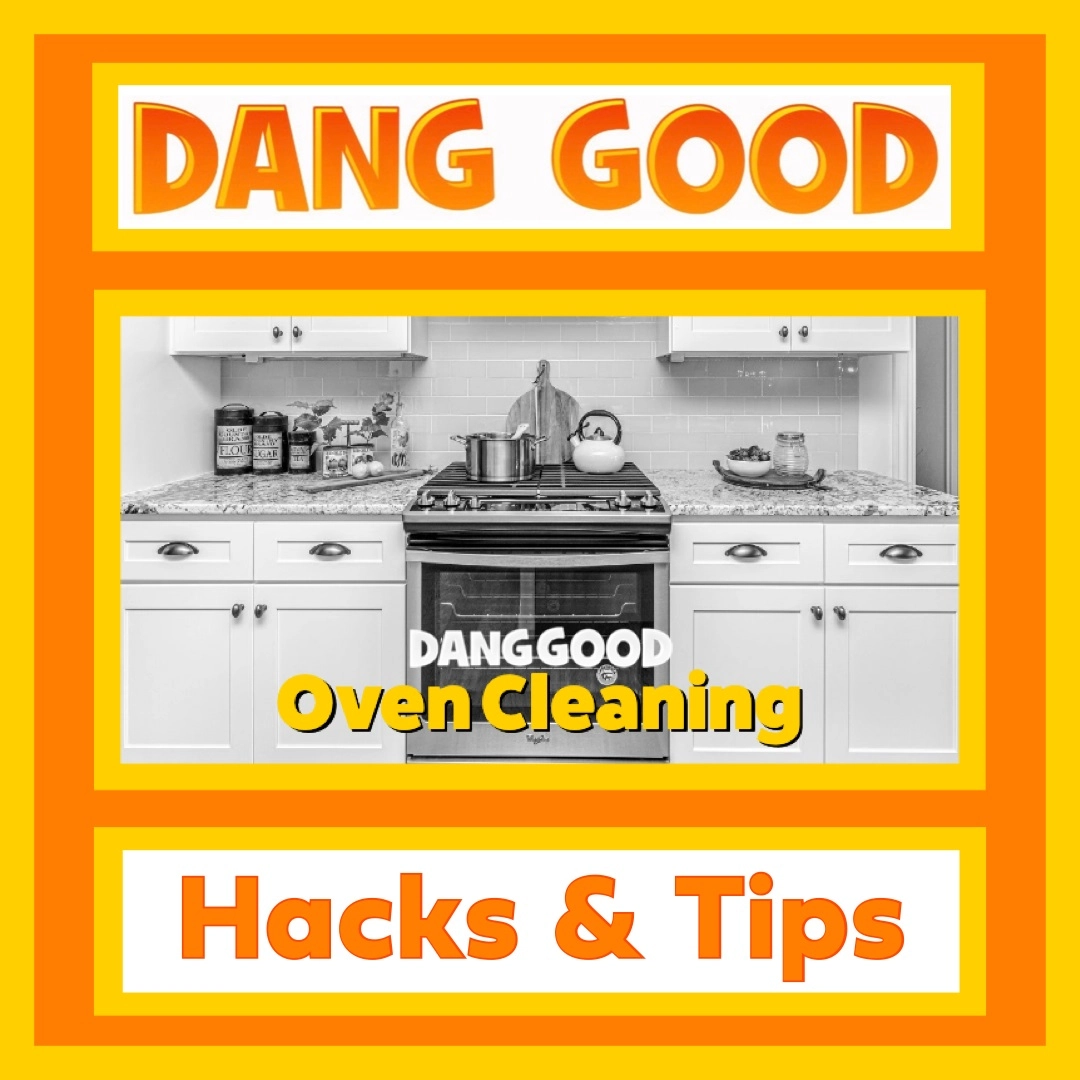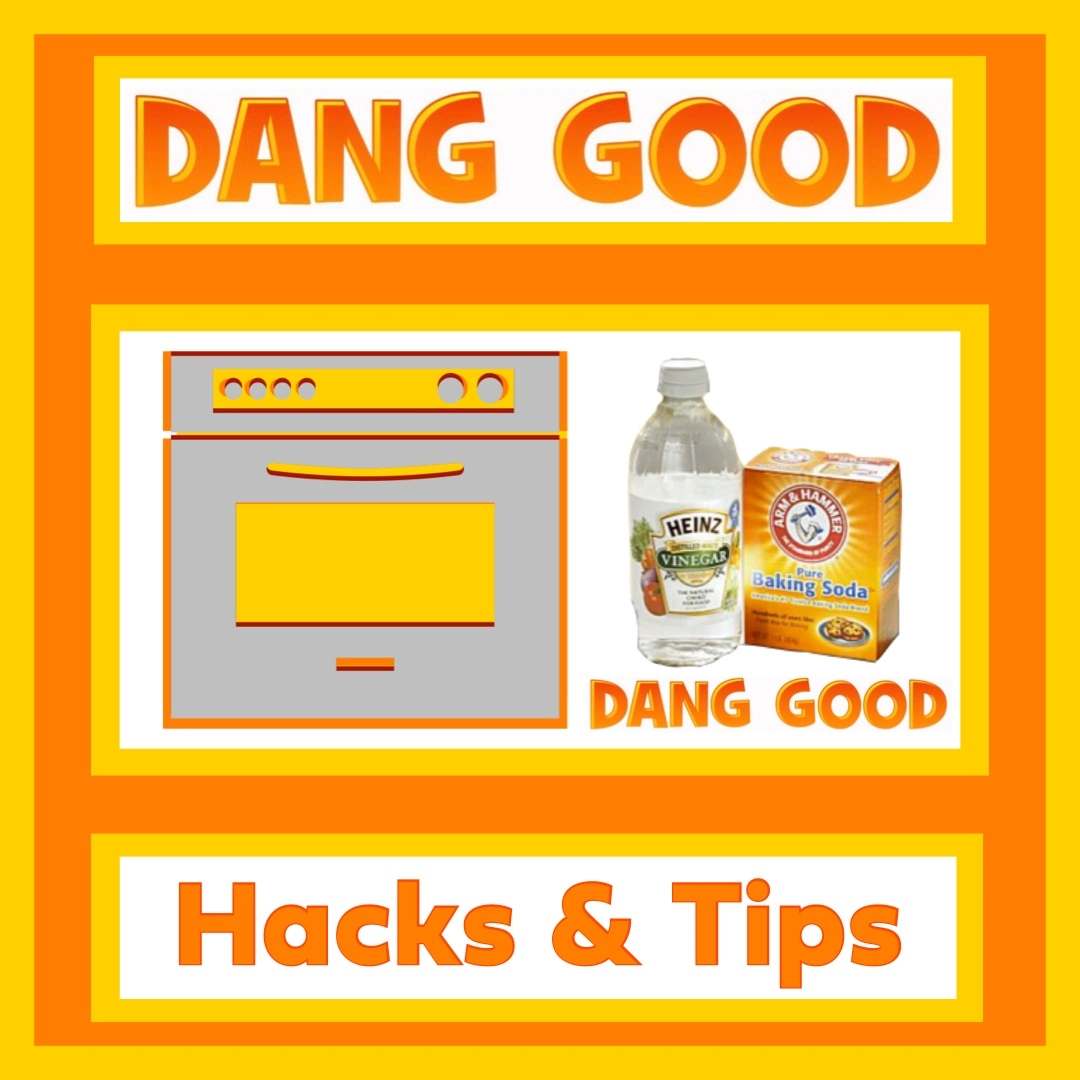How to Clean your Oven Naturally

Clean your Oven the Dang Good Way!
Practical Tips for Environmentally Friendly Oven Cleaning.
Introduction to Oven Cleaning.
Do you tend to put off Oven Cleaning? Are you gradually seeing a disastrously bigger mess to clean up? Perhaps you keep meaning to do it and then realize you don’t have any oven cleaner? Although Oven Cleaning can be done in three different ways, our preferred method is the natural way, and you’ll likely have all the ingredients you need right in your pantry. However, we mention all three methods and highlight some advantages and disadvantages of each method.
- Oven’s Self-Cleaning Option
- Using a Commercial Oven Cleaner
- Using a Natural Oven Cleaner
Tips before you start Oven Cleaning.
- Make sure your oven is off and cool.
- Oven cleaning is best done when there is no cooking or baking to be done for a while.
- Start with some clean surfaces and sinks where you can put things like oven racks to clean separately.
- Remove everything from the oven.
- Give the oven a wipe or even a vacuum to remove any loose food.
- You may wish to cover the floor near the oven to protect it from chemical spills or splatters.
- In the meantime, soak the oven racks overnight in hot water and dish soap. The bathtub is handy for the job.
- You may wish to gather your supplies together first, depending on which method you use below.
Your Oven’s Self-Cleaning Option – if you have that feature.
While in some ways more convenient, this method can be pretty smelly. It also requires high heat that may even trigger the smoke detector.
- Read the owner’s manual.
- Usually, there will be a button or switch to press.
- Make sure your oven is free of any cleaning chemicals.
- The oven is then heated to a high temperature.
- After the cleaning cycle is complete, let the oven cool down.
- Remove the burnt matter that is created in the cleaning process.
Using Commercial Oven Cleaner.
What’s wrong with a Commercial Oven Cleaner?
There are times when chemical cleaners are necessary. They can be quicker and more effective, but some can be very harsh and should be avoided if possible. If your oven has the usual spills and messes baked-on, you can clean it without resorting to oven cleaner. Here is why you might avoid the commercial oven cleaner.
Oven cleaner is highly acidic.
Commercial oven cleaners work because they have a very high PH level. This makes them acidic, which quickly eats through tough grime and baked-on food. This caustic nature, however, can also cause burns and skin irritation. That is why it’s essential to wear gloves and work in a well-ventilated area when using oven cleaners.
Oven cleaner is poisonous.
Like most heavy household cleaners, oven cleaner is toxic. When you have curious pets and small children around, this can spell disaster. If you must use oven cleaner (and there are times when it is appropriate), keep it locked up with bleach and other heavy hitters.
Oven cleaner is not eco-friendly.
The main ingredient in most commercially sold oven cleaners is sodium hydroxide, aka, caustic soda. If there is a sizeable outdoor spill of sodium hydroxide, the area needs to be closed off, cleaned, flushed and the spill disposed of in a way that doesn’t affect waterways. Your bottle of cleaner doesn’t have enough caustic soda to warrant a full-scale hazmat rundown but think of the bigger picture. When everyone uses oven cleaner and flushes the dregs down the drain, the carnage adds up.
If you must use the commercial kind:
- Get a fume-free kind but still ventilate the room. Often it is wise to wear a mask while spraying, so you are not inhaling anything.
- Do not get the cleaner on your hands. Wear rubber gloves.
- Spray the insides of the oven, avoiding the heating coils, following the instructions.
- Leave for the recommended amount of time and then wipe off.
Clean your Oven the Natural Way
Mindfulness is fashionable these days and for very good reason. When we take the time to think about ourselves and our place in the world and how our actions affect our health and the well-being of those around us, we become aware of ways we can do better. This extends to the products we use to clean our homes. And nowhere is this more evident than when it’s time to clean the oven.
It may be a slower method than the above methods, but it is so much kinder to both you and the environment. There are no chemical reactions to worry about irritating the hands or lungs.
Chemical Free Oven Cleaning.
Unless you are decontaminating a home, clearing a horde, or have spilled and baked to a solid mass, an entire 12-person serving of mac and cheese, chemical-free cleaners will do just fine. In fact, you can make your own with what you have on hand.

Baking Soda Paste and Vinegar Hack.
- Mix equal parts Baking Soda and Water into a spreadable paste.
- Coat the insides of the oven with the paste, again avoiding the heating elements.
- The paste may turn brown.
- Leave for a few hours.
- Use a spray bottle and vinegar to cover the baking soda mix.
- The bubbling reaction is normal and necessary.
- Use a damp microfiber cloth and you may need to scrape some of the more stubborn areas with something plastic.
- A quick sprinkle of baking soda and a spritz with vinegar on stubborn stains may help.
- You can also use this mix on the oven racks and the oven door. Both sides of the racks may need cleaning.
- The Video on Oven Cleaning with Baking Soda and Vinegar is a good visual.
Lemon and Water Hack.
- Fill an oven-proof bowl with water and the juice from two lemons.
- Then add the four lemon halves to the bowl too.
- Place the bowl in the oven and turn the oven on.
- Wait for the water to boil.
- The steam from the heated lemon mixture will help loosen caked-on dirt and grease. Plus, it will make your kitchen smell nice too.
- Cool the oven and then wipe it down with a damp cloth.
Clean your Oven Door.
Once the interior of the oven and racks are clean, tackle the inside and outside of the glass door. To clean from the inside, do the following.
- Remove the drawer at the bottom of the oven door.
- Attach some glass cleaner wipes to some coat hanger wire.
- Slide the wire into the slats at the bottom of the oven door – accessible from the space where you moved out the oven drawer.
- The baking soda and vinegar mix above also works well.
- Or just vinegar.
- Or scrub the glass with a dishwasher tablet that has been soaked with hot water. Then spray with vinegar and wipe with a paper towel.
- A Magic Eraser to Clean your Oven can work well too.
Cleaning the Outside of your Oven.
- Make sure your stovetop is cool.
- For the stovetop, use a mix of equal parts salt, baking soda and water to create a scrub.
- Rub away any spillages and wipe clean with a damp cloth.
- For the rest, a mix of ¼ cup vinegar and 2 quarts of water is good.
- Rinse well and dry.
Oven Cleaning Maintenance.
- Use an oven liner.
- Use a baking tray that fits the bottom of the oven to catch spills
- Use the lemon and water hack above before things get too messy.
- Clean up as you go.
- Think ahead about things that might spill – i.e., don’t overfill the containers.
- Instead, catch spills as they happen, even if you cannot wipe them straight away. Sprinkle the mess with salt, and any staining will easily be removed once the oven is
cool.
How often should you Clean your Oven?
Make cleaning your oven part of your overall spring or fall cleaning routine. However, if you wipe up spills when the oven has cooled on the same day those spills occur, you can save a lot of hard scrubbing time weeks later.
A Dang Good Clean!
A clean and organized home tends to stay that way, and we can help. We are the carpet cleaning, furnace duct cleaning, window cleaning and upholstery cleaning service of choice in Calgary, Airdrie, Chestermere, Okotoks and beyond. Click the links above to learn more.
Feel free to Share our Dang Good Blog Post
#CleanYourOven #OvenCleaning #CleaningHacks

